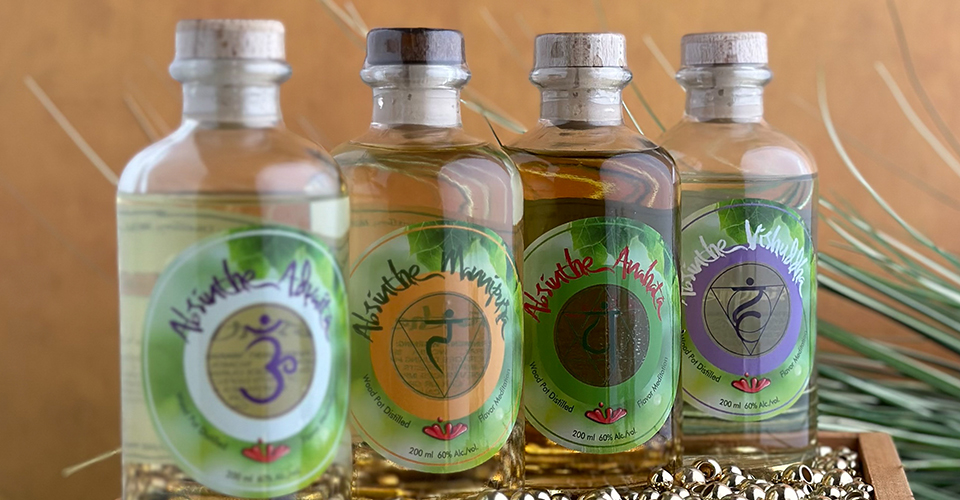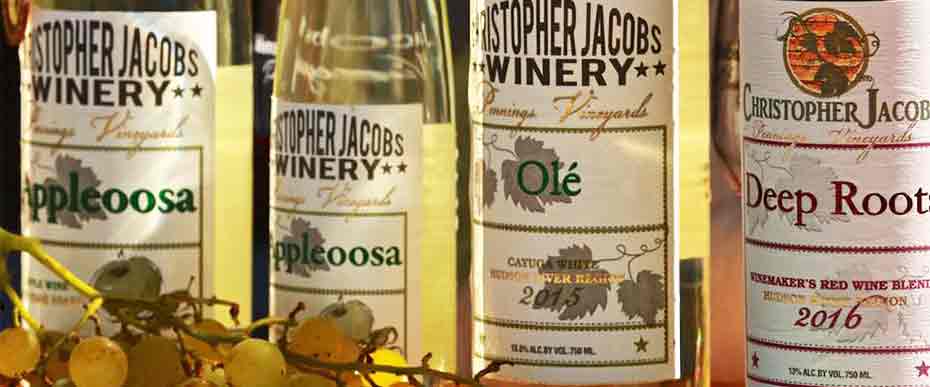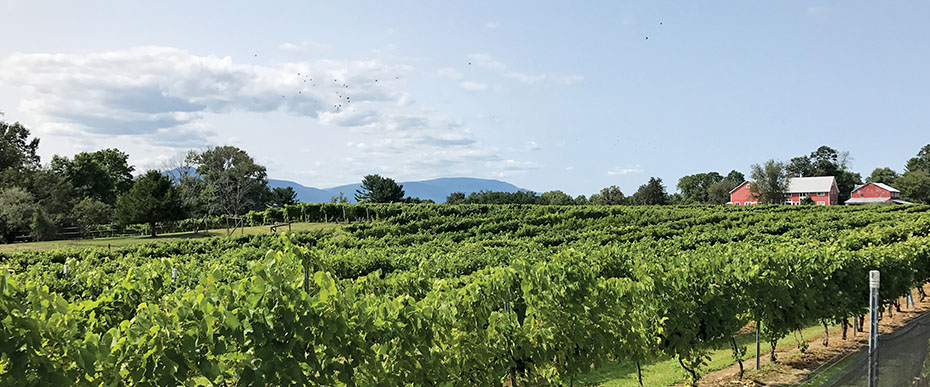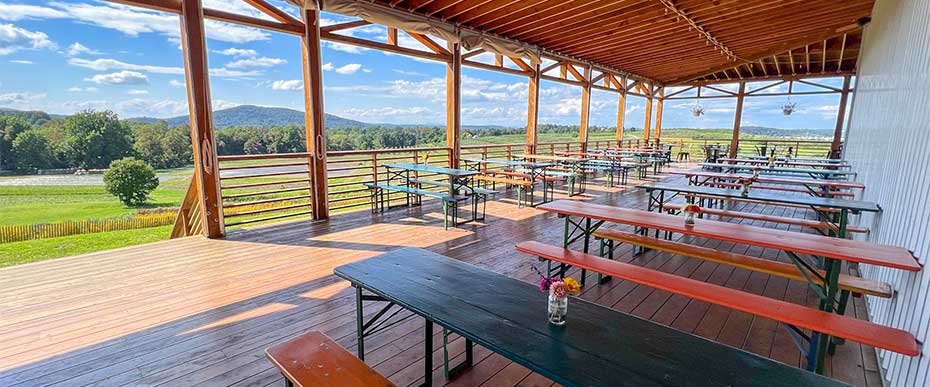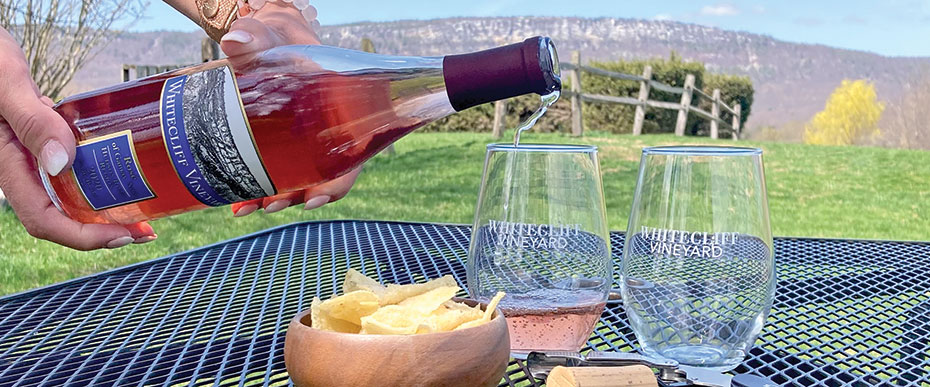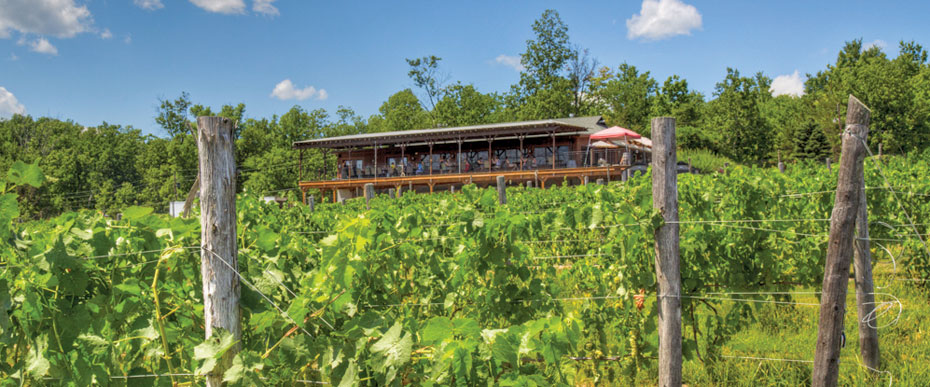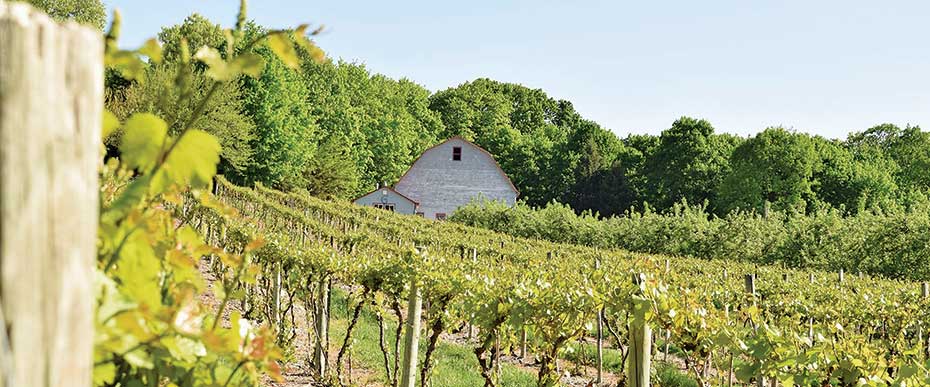For centuries, travelers have been flocking to the Hudson Valley for its rugged beauty, incredible bounty and easy access to New York City. With its fertile soil, rolling hills and thriving community of creative drinks and food producers the region has long drawn farmers, artists and dreamers who have shaped it into one of the most exciting and delicious places to be.
The Hudson Valley is considered the birthplace of several important political, artistic, and cultural movements—including the genesis of the nation’s wine movement, from vineyard to cellar. The Hudson Valley’s O.G. status rests on three major firsts: French Huguenots planted the country’s first vines in 1677 in New Paltz; Brotherhood Winery, established in 1839, is the oldest-continuously operating winery in the country; Benmarl Winery is perched on the oldest vineyard in the U.S., with roots dating back to 1772.
But wine is only part of the story. The region’s spirits and cider producers have also ignited multiple revolutions, shaping both tradition and innovation. Tuthilltown Spirits Distillery holds the honor of being the first legal whiskey producer in New York State since Prohibition, sparking a craft spirits revolution that reshaped the industry when it earned its status in 2003. The Hudson Valley’s cider heritage, rooted in Colonial times, has experienced a powerful resurgence by reviving traditions using heirloom, bittersweet, bitter-sharp, and even wild cider apples to craft dry, complex artisanal ciders that have captured the attention of both casual enthusiasts and seasoned drinks professionals.
Today, the Hudson Valley’s artisan makers continue to push the limits of creativity in their vineyards, orchards, and distilleries. Collectively, they are producing some of the country’s most innovative drinks, redefining expectations using unconventional techniques and ingredients.
And because these small-scale producers don’t just work in the Hudson Valley, they live here—deeply committed to the land and their communities—their products are rooted in sustainability.
“We live on the vineyard and orchard, so we literally live with what we grow,” says Dan Heavens, co-owner of Quartz Rock Vineyard in Marlboro with his wife, Jacqui. “So how we grow our fruit is extremely important to us. Every year, we do something to advance our farming practices. This year, we’re going herbicide free.”
They also grow a lot of hybrid grapes.
Rooted in the Past, Looking to the Future With Hybrid Wines
New York is the country’s third-largest grape producer, behind California and Washington. More than 134 varieties are grown across the Empire State, and they fall into three categories: Vitis labrusca (American species), Vitis vinifera (European species), and hybrids.
The Vitis vinifera grapes are the ones most familiar to wine drinkers. Think Chardonnay and Cabernet Sauvignon. Vitis labrusca include varieties like Concord and Catawba, often used for juice or grape jam. Then there are the hybrids, which are crossbreeds between American and European varieties.
New York, including the Hudson Valley, has long embraced all three. Of the 210 acres under vine here, the top varietals are: Cabernet Franc, Riesling, Vidal Blanc, Seyval Blanc, Chardonnay, and Concord—or three European, two hybrids and one American.
While there will always be a place on our table for all of these varietals, recently, some of the more exciting wines have been focused on heritage Hudson Valley grapes and cool weather hybrids.
“Our philosophy is that great wine is made in the vineyard,” Heavens says. “For us, that often means hybrid grapes. We had great success growing hybrids such as Noiret, which recently received 91 points in Wine Enthusiast, plus we grow Marquette, Valvin Muscat, and others.”
Heavens says they have conducted blind taste tests of hybrid versus vinifera wines, and none of the tasters could accurately identify the differences. (Although if you ask the average person if they’d prefer a Chardonnay or Catawba, we can guess which one they’ll pick.)
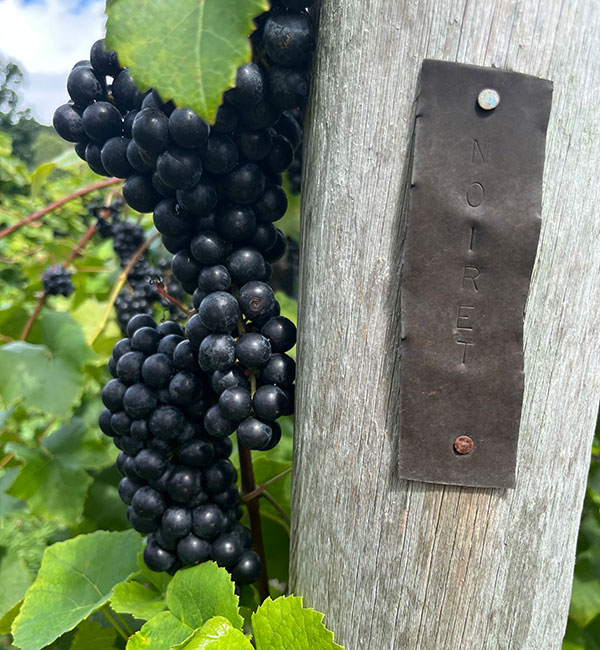
Quartz Rock Vineyard embodies the family farm, winery and cidery ethos that defines the Hudson Valley, with a rustic, but polished vibe, and a selection of estate-made wines and cider, and a pet- and child-friendly welcome. Their Sparkling Valvin Muscat is an easy-drinking but sophisticated party in a bottle, lightly filtered, bottle conditioned, with notes of grapefruit, apricot and lime.
Applewood Winery, meanwhile, is the oldest working farm in Orange County, and one of the oldest farms west of the Hudson River—so it’s no surprise that a successful and historic winery is simultaneously rooted in the past, while gazing forward into the future. When Applewood started making wine in the 1990s, the Hull family prioritized making the best wine they could in the most sustainable way possible.
Because hybrid grapes are bred to be pest, weather and disease-resistant, they are often the most eco-friendly option, requiring far less inputs in the vineyard to yield stellar results. Applewood’s Vidal Blanc, a mainstay in the tasting room, is reminiscent of a California Pinot Grigio with notes of ripe grapefruit, pears and peaches. Delicious with aged or smoked cheese.
These are just a few examples.
As it happens, estate-grown, incredibly elegant, but deliciously approachable Hudson Valley heritage wines abound. Milea Estate Vineyard has several classic wines classified as “heritage” because they are made with native or culturally significant hybrids developed here. The barrel-fermented and aged Seyval Blanc Élevage would be easy to mistake for a French Chardonnay in a blind tasting.
Christopher Jacobs Winery at Pennings Vineyards turns farm-grown apples and hybrid grapes into wines that express their locale. Bella, which sells out every year, is a dry and refreshing Seyval Blanc. The vibrant Holy Cow, made with Cayuga White, is a go-to for Sauvignon Blanc fans. At Clermont Vineyards, meticulously crafted fruit-forward and complex hybrid wines like Arandell (and others grown on their expansive vineyard, like Noiret and Marquette) will satisfy any fan of Pinot Noir or Cabernet Sauvignon.
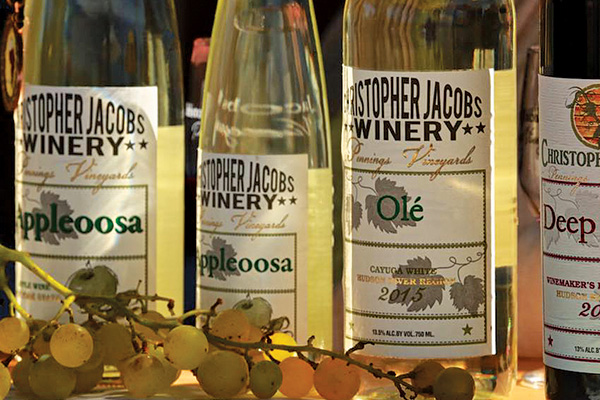
Photo: Christopher Jacobs Winery
Embracing Wildness With Land Over Hand Approach
In a world that increasingly relies on technology to get by, Hudson Valley producers are persuading many that actually, maybe, Mother Nature knows best. While life without Wi-Fi and same-day delivery is, at this point, unimaginable for many, there is something to be said for a hands-off approach to fermentation and production.
Instead of relying on tools and commercial yeast to smooth out challenges in the cellar, some producers are embracing a terroir-centric approach to wine, cider and mead making, and allowing the vintage to speak for itself.
“I started experimenting with wild ferments back in 2012,” says Peter Voelker, owner of Helderberg Meadworks. “It took almost two years to produce what was released as my Feral mead.”
Voelker’s approach was simultaneously simple and complex.
“I wanted to recreate something that could have been made in the Viking age with no commercial winery supplies available. My honey was already local and raw, but it was a long trial and error process to develop a mead from wild yeast that was strong enough to ferment to 13% ABV and still taste great.”
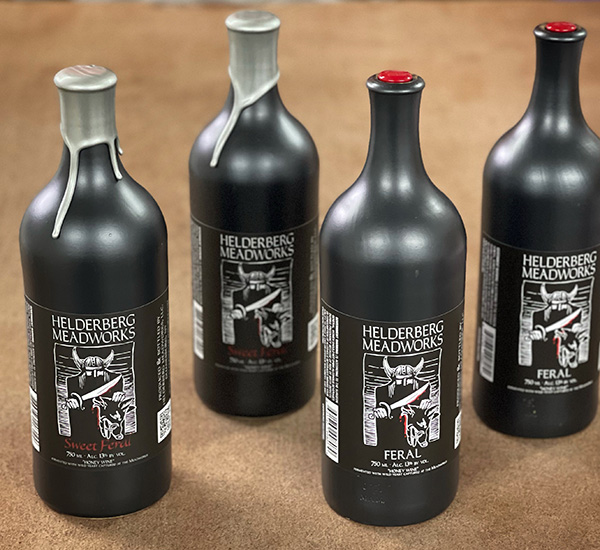
After 20 attempts he captured and propagated a wild yeast strain that he has been using exclusively ever since.
At Benmarl Winery, vintner Matt Spaccarelli embraces natural winemaking for a range of wines, including the regional classic Cabernet Franc and cold-hardy Seyval Blanc. But their leesy Pétillant stands out for its unfiltered expression. Crafted from sustainably-grown estate grapes, this sparkler undergoes wild fermentation, letting native yeasts shape its character. Its complex notes of ruby red grapefruit and blood orange keep fans coming back for more.
Robibero Winery has reimagined their traditional terroir-driven Cabernet Franc to create “Blanc Franc” using a hands-off approach. Instead of extracting a deep ruby color from the grapes, they opted to press them quickly and ferment the juice off the skins. The result? A golden-white wine with vibrant depth and unexpected flavor.
Doc’s Cider takes this wild spirit in a different direction, with ciders like its limited New England Small-Batch Cider made from locally-grown apples and fermented with raisins and brown sugar. Unfiltered and full-bodied, this cloudy, subtly sweet cider is reminiscent of the simple ciders made by colonial farmers who left it all to chance.
Bringing Nature to the Bottle With Forest and Herb Inspired Spirits
Driving from winery to distillery to cidery to meadery in the Hudson Valley, two things are unavoidable: farms and forest. Many producers here are taking a cue from the land, and bringing nature into the bottle.
“Our general philosophy is that nature will give you everything you need for awesome botanically-influenced spirits if you are willing to taste and see—and then figure out how to not mess it up,” says Stephen Osborn, co-owner of Stoutridge Distillery and Winery.
“This thinking allows us to use small amounts of fairly exotic herbs and spices to obtain even higher levels of flavor sophistication,” Osborn explains. “For example, we forage for spice berry bark and culinary sumac flower, as well as bring in ingredients from all over the globe.”
Initially, Stoutridge started with a series of gins reminiscent of a style made in the 1800s (essentially, botanically influenced whiskey). Early on, they were awarded “Best Genever Gin” at the prestigious ADI International Spirits competition.
“For our absinthes, we have also pursued a complex botanical path,” Osborn says. “A typical absinthe recipe from the late 1700s Switzerland or early 1800s France will have an array of Ayurvedic spices incorporated into it. By adjusting the intensities of these, you can, in effect, ‘align’ the absinthe flavor to the Yogic chakras, as each chakra has associated botanicals already in the absinthe.”
All told, Stoutridge makes eight absinthes with more than 15 botanicals in each, all aged in glass demijohns before bottling.
Others, like Brotherhood Winery, infuse this nature-inspired approach into some of their products, as well. For decades, the team here has honored the ancient German celebration of the coming of spring with May Wine, using fresh flowers of woodruff, strawberries, and young wine to make a light, refreshing quaff that evokes springtime and green meadows.
Distillers, like Tuthilltown Spirits, bring a touch of the forest to their products, too, with creations like Hudson Whiskey NY Short Stack, a New York born-and- bred straight rye whiskey finished in maple syrup barrels. The bold rye spice notes meld with subtle maple sweetness for a sophisticated, earthy sip.
Throwing Out the Rules to Craft One-of-a-Kind Creations
Rules exist to be broken in the Hudson Valley. More and more producers are opting not to stay in their lane, with delicious results for us.
Treasury Cider, for one, is devoted to fermenting only apples grown at their family’s orchard, Fishkill Farms. But, they’re also not afraid of going rogue. Duet is a collaboration with Fjord Vineyards, and includes juice from their apples co-fermented with Fjord’s Cabernet Franc skins. This not only adds color, flavor and complexity, it also upcycles the skins, making it captivating for a refreshing additional reason. Among others in their innovative lineup, Treasury Cider also produces Wild At Heart, a cider steeped with wild staghorn sumac, foraged from the farm.

Curious enthusiasts in search of a palate cleanser—and something truly unique—may be hooked by Helderberg Meadworks’ collaboration called Loki’s Lure. The mead is made using coffee and single-origin cocoa from local Wired Coffee Roaster and Cacao Vita.
Untamed flavors, crafted with care and a farm-to-glass philosophy are limitless here in the Hudson Valley. The region is rooted in revolution and innovation, and the craftspeople and farmers who live here are determined to keep it that way by preserving traditions and finding new responsible ways to keep the many who flock here sated—and inspired to take another sip.
Header photo: Absinthes, courtesy of Stoutridge Distillery & Winery

